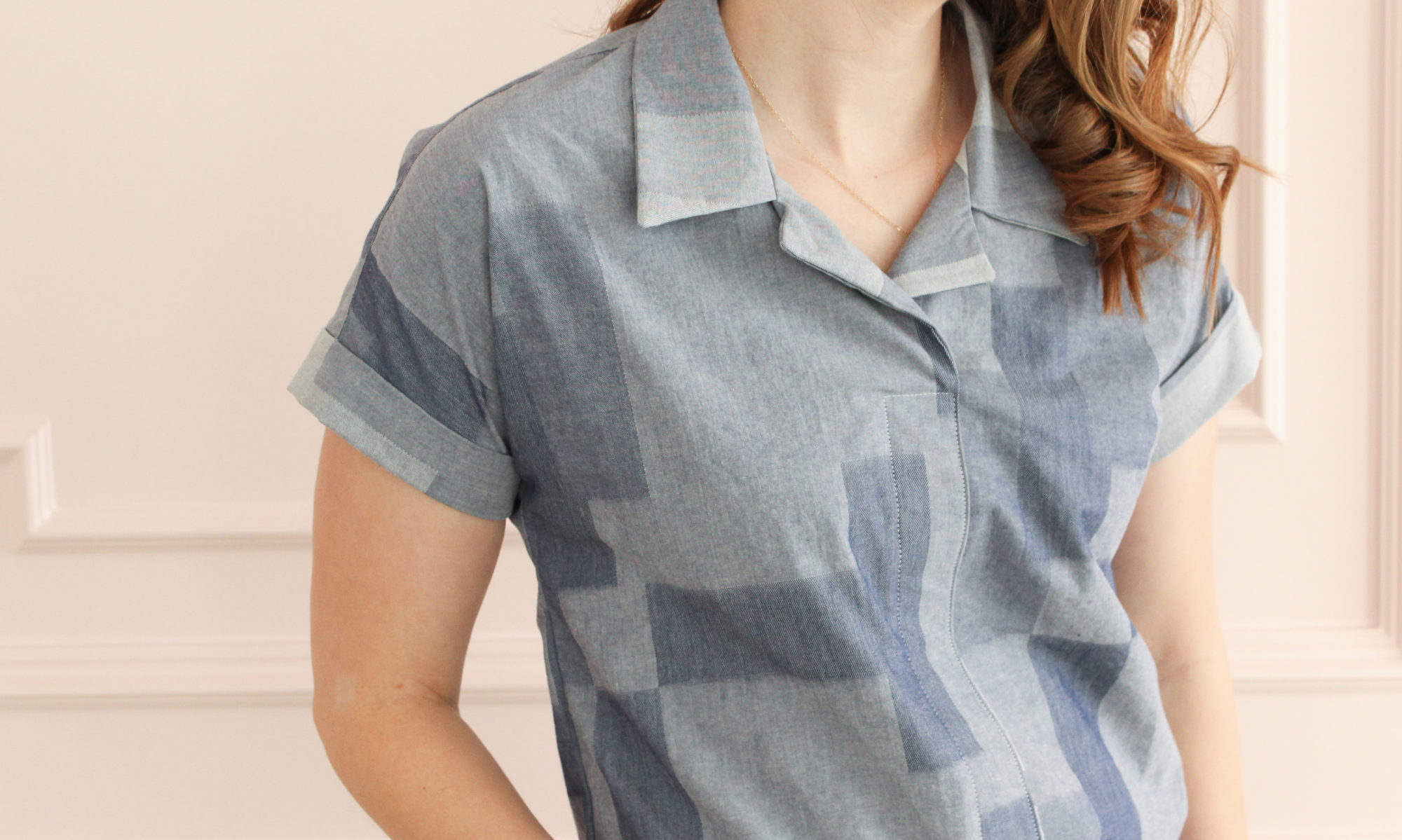Hello! It’s been a minute since writing here but, it was important for me to take some time over the last month plus to focus on my family as well as dive into anti-racism efforts. As I get back into sewing, I’m planning to take a slower approach that focuses on quality and versatility instead of instant gratification. My wardrobe is approximately 90% handmade. While I can be proud of that, it’s also getting quite full. The Warp and Weft Wardrobe Project will be my ongoing capsule wardrobe project. It was originally planned as a summer project. However, there’s a good chance it will continue into the fall. Enough rambling. Let’s get to the details.
Inspiration
If you’ve been following me for any amount of time, you may remember that I’m a huge fan of Ace and Jig. Last year I made two projects inspired by Ace and Jig. My Zadie Jumpsuit and Madrid Dress quickly became favorites.

Other than their intricate and colorful woven textiles, my favorite thing about the Ace and Jig brand is the way their stylists fearlessly mix patterns and colors. Just take a scroll through the Ace and Jig Instagram to see what I mean. So good, right?

Inspired by the work of Ace and Jig as well as the beautiful Warp and Weft Wovens line by Alexia Marcelle Abegg for Ruby Star Society, I sat down one evening in April and concocted a plan. For a moment my creativity took flight and I messily scribbled my ideas and calculated yardages on a scrap piece of paper (see above). Using five fabrics from the collection, I would create a 9 piece capsule wardrobe that could be mixed and matched to create 20+ outfits. Once the plan was formed, I couldn’t risk my favorite fabrics selling out so I pre-ordered them from Finch Knitting and Sewing Studio as well as Cottoneer.
Here’s the Plan…
Fabric #1

The burnt orange color and alternating checkered stripes of Matinee in Earth had me falling head over heels the moment I saw it. For this print, I’ve planned a tapered leg pair of Sew House Seven Free Range Slacks (with contrasting side stripe like my navy pair made earlier this year) and a Common Stitch Pipit Loungewear Set top.
Fabric #2

Matinee’s woven pattern was compelling enough that I couldn’t stop myself from ordering it in both colorways. Matinee in Dahlia is destined for a short puff sleeve Roscoe Blouse (see Kelli’s hack here) and an In the Folds Peppermint Wrap Skirt.
Fabric #3

From far away, Mountain in Earth reads a little more solid and felt suitable for mixing with every other fabric in the collection. As such, I’ve selected the Ready to Sew Patsy Overalls for this print.
Fabric #4

Stitch in Lilac is the wildcard of the bunch. I felt that the predominately orange colors of the other fabrics would benefit from something different in the mix. This is one idea that I haven’t set in stone yet. However, my tentative plans for this fabric are a Criswood Sews Envelope dress and a Wiksten Shift top.
Fabric #5

Finally, Parade in Lavender is set to become a pair of Anna Allen wide leg Pomona Pants. Similar to the Persephone Pants, the Pomona Pants don’t have an outside leg seam which will make the pattern matching of this design significantly easier on me.
Wrap Up
Truthfully, this whole project is far more planning than I usually do when it comes to my sewing. Often, I fly by the seat of my pants and sew whatever feels right in the moment. Completing the Warp and Weft Wardrobe capsule project will be a true challenge for me. None of the plans are 100% set in stone so I’ll be giving myself freedom to switch up pattern selections as necessary. The goal is to focus on one fabric each week for the rest of the summer. As a final project wrap up, I’ll use the scraps to create a scrappy Wiksten Shift top. Once each fabric has been sewn, I’ll record my thoughts on the completed pieces here on the blog. By September, October, November or, even December (since 2020 is certainly no respecter of plans) I hope to have a full capsule to share with you. Stay tuned!

Thanks for reading!














































































